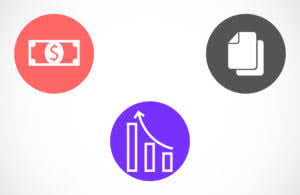
You calculate working capital by subtracting current liabilities from current assets, providing insight into a company’s ability to meet its short-term obligations and fund ongoing operations. Current assets include assets a company will use in fewer than 12 months in its business contribution margin operations, such as cash, accounts receivable, and inventories of raw materials and finished goods. Current liabilities include accounts payable, trade credit, short-terms loans, and business lines of credit.
- This means that grocery stores can use the cash they receive from customers to cover their expenses until they have to pay their suppliers.
- In such cases, businesses must proactively identify and solve the issues causing negative working capital.
- Lenders and investors closely examine NWC as an indicator of short-term financial stability.
- Our free net working capital calculator below takes the guesswork out of calculating NWC.
- Negative working capital leaves a company with minimal cushion to absorb the unexpected.
- Assessing liquidity involves evaluating how quickly a company can convert current assets into cash, which is particularly vital during economic uncertainty or market volatility.
- Current assets include cash, cash equivalents, accounts receivable, stock inventory, marketable securities, prepaid liabilities, and other liquid assets.
Key Indicators of Negative Working Capital

A positive net working capital indicates that a business is capable of settling its short-term liabilities with its short-term assets. Conversely, a negative net working capital could be a red flag for potential investors, indicating financial instability. With accounts payables, a positive net working capital allows a business to comfortably meet all their short-term liabilities. This can help to establish a strong relationship with vendors and potentially negotiate better terms in the future. Accounts payable refers to the money the company owes to its suppliers or vendors. Other common liabilities that businesses often face include accrued wages for employee compensation, sales taxes, and interest payable on debts.

Payment Gateway
Efficient inventory management, such as using Just-In-Time (JIT) systems, minimizes holding costs and improves liquidity. The inventory turnover ratio, which measures how often inventory is sold and replaced over a period, is a key indicator of management efficiency. A higher ratio suggests effective control, which contributes positively to NWC. It then uses that cash to purchase more inventory or expedite growth in other ways.
Slavery Statement

Financial data from McDonald’s Corporation shows that the world’s largest restaurant had a negative working capital of $698.5 million between 1999 and 2000. NWC focuses on the operating assets and liabilities to determine the minimum cash needed to keep the business running smoothly. When you determine negative nwc the cash flow that is available for investors, you must remove the portion that is invested in the business through working capital.
- A positive calculation shows creditors and investors that the company is able to generate enough from operations to pay for its current obligations with current assets.
- For capital-intensive industries (e.g., manufacturing), a higher NWC is necessary, while low-margin, high-turnover industries (e.g., retail) can function effectively with lower or even negative NWC.
- He has proudly served thousands of companies in identifying gaps in talent, capabilities, systems, and more.
- They may also pay their suppliers on a longer payment cycle, while customers pay for their purchases immediately.
- Net Working Capital (NWC) measures a company’s liquidity by comparing its operating current assets to its operating current liabilities.
- Positive working capital means that a company has more current assets than current liabilities, indicating that it has enough funds to cover its short-term obligations.
- Retailers, restaurants, grocery stores, cash-only businesses, and discount retailers are just a few examples of industries where negative working capital may be prevalent.
- By doing this, the company is effectively using the vendor’s money as an interest-free loan.
- This is due, in part, to new management’s decision to change the capital structure of the business.
- This can be a temporary situation, such as when a company makes a large payment to a vendor.
- Regarding accounts receivables, companies with negative net working capital might need to be stringent with credit terms or aggressively chase customer payments.
- Here are a few techniques that can help businesses ensure working capital effectiveness.
You then take last year’s working capital number and subtract it from this year’s working capital to get change in working capital. A business has negative working capital when it currently has more liabilities than assets. This can be a temporary situation, such as when a company makes a large payment to a vendor. However, if working capital stays negative for an extended period, it can indicate that the company is struggling to make ends meet and may need to borrow money or take out a working capital loan. Another crucial part of managing net working capital is the efficient handling of accounts receivable. Ensuring the timely collection of receivables is paramount to the financial health of a company.

NWC captures the operating current assets and current liabilities to quantify the minimum cash balance, which is the amount of cash required to be on hand for operations to continue running as usual. A positive calculation shows creditors and investors that the company is able to generate enough from operations to pay for its current obligations with current assets. A large positive measurement could also mean that the AI in Accounting business has available capital to expand rapidly without taking on new, additional debt or investors.
However, negative working capital can also be a sign of financial distress if a company is unable to pay its suppliers on time. In this case, suppliers may stop providing goods or services to the company, which can lead to a decline in sales and a further deterioration of the company’s financial position. For example, negative working capital is common in industries where inventory turnover is high, such as retail. In these industries, companies can sell their inventory quickly and generate cash before they have to pay their suppliers. This allows them to operate with negative working capital and use the cash generated from sales to finance their operations.